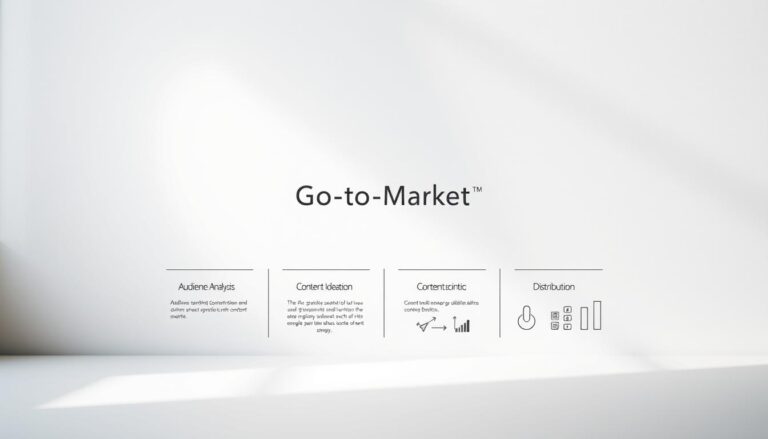Today’s digital age demands effective drive engagement and retention through automated strategies for businesses to stay ahead. High turnover rates are a challenge, making it vital for companies to engage and keep a committed workforce. Automation tools play a key role in creating outstanding employee experiences. They bring automated customer engagement and retention strategies into the limelight. This helps tackle the high turnover rates that hurt productivity and loss of knowledge.
AI-driven learning platforms and chatbots enhance personalized learning and improve communication, transforming workplace interactions and learning. This shift is about more than new tech. It’s about rethinking the employee journey, from starting out to ongoing development and getting feedback.
Innovations in HR practices, like using machine learning and predictive analytics, help foresee employee turnover. This allows for early retention efforts. At the same time, automation supports employee wellness and work-life balance. This creates a workplace where wellness is checked on and workloads are balanced.
AI-powered survey platforms drive data-based decision-making by analyzing feedback in real time. This uncovers insights for making organizations better. Available to all business sizes, from small firms to big corporations, these HR automation platforms are both cost-effective and scalable.
Key Takeaways
- Automation lays a foundation for strong retention strategies and employee happiness.
- AI enables customized learning and instant feedback, leading to a more lively and inspired team.
- Automated tools ensure clear communication, preventing misunderstandings and promoting a culture of openness and belonging.
- Data analysis and predictive tools allow for timely, informed HR actions and retention efforts.
- The flexibility and affordability of HR automation tools make them attractive for businesses of all sizes.
- By tackling the main issues of employee retention, automation can greatly reduce turnover rates.
Understanding Engagement and Retention Metrics
Businesses need to grasp key metrics for measuring user engagement and retention to use strategies well. Understanding these metrics can offer insights. They help businesses improve their strategies for better results.
Key Performance Indicators for Measuring Success
When looking at the success of engagement and retention strategies, several indicators are important. The Net Promoter Score (NPS) helps measure customer satisfaction and loyalty. Click-Through Rates (CTR), Conversion Rates, and Customer Satisfaction Scores (CSAT) show how users respond to automated systems.
The Role of Customer Feedback
Customer feedback is vital for improving engagement techniques. It lets businesses tweak their automation tools to meet user expectations. This improves satisfaction and loyalty. The process helps businesses bond better with their customers.
Differences Between Engagement and Retention
Engagement and retention are different but important. Engagement measures how customers interact with a brand in a period. It can be improved with personalized content. Retention looks at long-term loyalty and the chance of customers coming back. It benefits from good customer support and loyalty programs.
| Metric | Formula | Example |
|---|---|---|
| Net Promoter Score (NPS) | NPS = Promoters (%) – Detractors (%) | 40% |
| Click-Through Rate (CTR) | CTR = (Clicks/Impressions) x 100 | 10% |
| Customer Satisfaction Score (CSAT) | CSAT = Satisfied customers (%) | 80% |
| Customer Lifetime Value (CLTV) | CLTV = AOV x Purchase Frequency x Customer Lifespan | $2,000 |
| Customer Retention Rate | (Number of customers at end – Number of new customers)/Number of customers at start | 90% |
| Monthly Customer Churn Rate | (Number of customers churned/Total customers at start) x 100 | 1% |
The Importance of Automated Strategies
In today’s world, using automated retention methods is crucial for success. They help businesses grow by making tasks easier and keeping customers happy.
Automated customer engagement helps companies get better at serving their customers. The use of automation increases loyalty and satisfaction. This is because it makes operations smoother and helps in managing resources well.
Automation helps keep customers coming back. It does this by improving how they feel about the service they get. Learn how automation drives loyalty. There’s a lot of evidence showing how important automation is for efficiency and operation.
Streamlining Communication Channels
Automated tools make talking to customers easy and fast. Things like chatbots help answer questions quickly. This makes customers happy and takes the pressure off staff.
Enhancing Customer Experience with Automation
Automation goes beyond just making things easier. It helps keep customers by making their experience personal. Using AI, companies can tailor their interactions to fit each customer’s needs.
Automated customer engagement tools look at customer data closely. They help answer needs faster and more accurately. This makes the customer’s experience better which helps keep them loyal to the brand.

Automation also helps solve problems before they become bigger. This approach keeps customers happy and staying with the company. It plays a big role in making more money for the business.
| Feature | Impact | Percentage Improvement |
|---|---|---|
| Marketing Automation | Reduction in Overhead | 12.2% |
| Personalized Emails | Increase in Open Rate | 26% |
| Automated Data Collection | Increase in Data-Driven Decisions | 2x |
| AI Chatbots | Enhanced Virtual Sales & Support | 24/7 Operation |
| Client Health Tracking | Reduction in Customer Churn | Up to 25% |
Using automated systems improves customer service and loyalty. This is very important in the competitive world we live in. Automation makes sure services remain top-notch and customers stay engaged. This is key to growing a business over time.
Tools and Technologies for Automation
Today, the need for effective customer retention strategies is more important than ever. To meet this need, many organizations are turning to automation. A wide range of automation tools has proven to be essential for improving efficiency and making customers happy.
Overview of Popular Automation Tools
There’s a variety of technologies out there. These range from AI systems that better the customer experience to tools that help teams work together in real-time. Not only do these tools make daily tasks easier, but they also play a key role in keeping customers coming back. Analytics tools, for example, give businesses detailed information on what their customers like or dislike, helping them to fine-tune their approach.
Choosing the Right Software for Your Needs
Finding the perfect automation software means looking at both its features and price. This is especially true for small and medium-sized enterprises (SMEs). They need affordable solutions that can grow with their business. Tools that help with automated engagement are especially useful, as they support both expansion and customer loyalty.
Here are some of the ways businesses gain from these tools:
| Benefit | Percentage |
|---|---|
| Increased Employee Productivity | 90% |
| Enhanced Team Collaboration | 85% |
| Decisions Made Faster and More Accurately | 90% |
| Employees Having Time for Strategic Projects | 80% |
| Job Satisfaction with Automation Use | 90% |
| Satisfaction with Employer Post-automation | 84% |
With such impressive numbers, it’s clear that the right tech can really make a difference. For example, Vonage saw big improvements by using automation. They saved time, reduced mistakes, and made their customers happier.
Adding these advanced tools to your business isn’t just about automation. It’s about getting ahead of the competition. This is done through smarter engagement and stronger retention strategies.
Implementing Automated Engagement Strategies
In today’s world, automated user retention strategies are key for better business and happier customers. Fusing technology with a personal touch helps not just meet, but beat customer hopes. Such mixing aids personalized growth through automation, boosting business results.
Deloitte’s study shows a 53% drop in manual work by adding automation to processes. This highlights how automation makes customer engagement more efficient.
Personalization Techniques in Automation
Businesses are personalizing interactions with customers using automated strategies. This is crucial for personalized growth through automation. Research by McKinsey & Company states that 80% of customers prefer companies that personalize. By using automated tools sales can jump by 15%, thanks to tailored customer journeys. Targeted campaigns that reflect customer desires boost satisfaction and experience.
Leveraging AI for Enhanced Customer Interaction
Using AI in engagement strategies is essential. Salesforce research points out a 451% boost in qualified leads with automation. AI chatbots handle basic questions and support, cutting customer service costs by up to 20% (McKinsey & Company).
AI also creates a feedback loop, learning from customer habits and preferences. This makes each customer feel special and understood. Gallup notes that 68% of customers stick to brands that offer personalized experiences, boosting personalized growth through automation.
So, AI in automation isn’t just about tech replacing humans. It’s about creating interaction that matters at each step. The goal is making sure automation aids humans, leading to happier customers and stronger business growth.
Monitoring and Analyzing Performance
Effective management depends on good monitoring and analyzing. We use automated engagement techniques and automated user retention strategies. These improve how we get and use data. This way, we better understand campaign results and employee involvement.
To see if these strategies work, we need advanced analytics. Tracking automated campaigns helps us make smart decisions. This leads to happier and more loyal employees. It’s key when 48% of workers are looking to leave their jobs.
Setting Up Analytics for Automated Campaigns
Starting analytics for automated campaigns gives us deep insights. With this info, businesses can fine-tune their approaches. They better meet employee needs and goals this way.
Interpreting Data to Inform Future Strategies
Understanding data helps tweak retention programs. Using SurveyMonkey and Achievers Employee Experience Platform™, firms get a lot of feedback. They use this info to strengthen their retention plans. This leads to better organizational performance.
Also, feedback from BambooHR and Leapsome shows individual employee feelings. HR can then make retention strategies that really respect and reward employees. This aligns with fundamental retention values.
More people want work that allows creative and social contributions. Over 70% of Millennials prefer mission-focused employers. It’s essential for platforms to encourage both engagement and positive change.
In summary, tech helps us fully grasp employee dynamics and happiness. Analyzing these helps improve our plans. It lets us spot where we can make impactful HR changes. This boosts our investment returns in employee happiness and loyalty.
To learn more about managing performance, look into this detailed guide on effective performance management.
Best Practices for Driving Engagement
To really drive customer loyalty, use smart strategies. These strategies help raise engagement and make customers happier. Let’s look at the most important practices that boost engagement and loyalty.
Crafting Compelling Content
Good content is key to engaging users. Automation helps keep your messages consistent and timely. For instance, adding videos within apps keeps users interested. Videos are often more engaging than just text.
Timing and Frequency of Automated Messages
It’s crucial to know when and how often to message your customers. You want to find the perfect timing and frequency. This helps avoid overwhelming your customers. With automated tools, businesses can figure out the best timing. This can increase sales conversions by 15% in some areas.
Segmenting Your Audience for Maximum Impact
Personalizing messages works best. By segmenting your audience, you can send more relevant messages. Doing this has reduced cart abandonment by over 40% in retail.
Applying these practices takes careful planning. Here’s a look at how they improve engagement:
| Strategy | Improvement Metric | Description |
|---|---|---|
| Omnichannel Integration | 10% increase in customer satisfaction | Seamless experience across all platforms. |
| Automated Rewards Systems | 40% decrease in cart abandonment | Effective in recovering potentially lost sales. |
| Real-Time Customer Engagement | Improvement in customer satisfaction | Quick responses and real-time interactions build trust. |

Using these automated practices, businesses boost efficiency and create personalized experiences. This is key for long-lasting customer relationships.
Case Studies: Success Stories in Automation
Small businesses have found success with HR automation. “Sweet Bites,” a local bakery, cut admin tasks by 40% using automation. This shift improved efficiency and gave them more time for customers.
Examples from Leading Brands
“Tech Solutions,” an IT firm, boosted employee satisfaction by 30% in six months with automation. Shopify and Gusto made big leaps in hiring and scheduling, thanks to AI and automated tools.
Lessons Learned from Successful Implementations
Automation is key to modern employee engagement and retention. A tech startup saw a 30% rise in retention by automating onboarding. These cases show how automation can spur growth and future success for small businesses.
FAQ
How can automation drive engagement and retention?
Automation helps in keeping communication smooth and timely. It custom-tailors interactions with users and gives insights into their activities. This lets businesses proactively meet customer needs. By doing so, customer engagement becomes meaningful. This improves the chance they’ll stay loyal to the brand.
What are the key performance indicators for measuring customer engagement and retention?
For customer engagement, focus on metrics like active use, time spent, interaction rates, and satisfaction scores. Retention metrics look at customer churn, repeat purchases, and loyalty program participation. These help companies see if their strategies are working and where to improve.
What role does customer feedback play in retention strategies?
Customer feedback is crucial as it shows what customers like and what needs work. Automated tools can quickly gather and analyze this feedback. This lets businesses fix problems fast, improving retention rates.
How are engagement and retention different?
Engagement is about how people interact with and feel about a product or brand. It involves their active use and emotional connection. Retention is about keeping customers over time, like getting them to buy again. Engagement helps make retention possible.
What types of communication channels can be streamlined through automation?
Automation smooths out many ways we talk to customers. It works with emails, social media, chatbots, and text messages. It makes talking to customers consistent and fitting for the situation. This saves time and ensures quick replies to customers.
How does automation enhance customer experience?
Automation speeds up service and cuts down wait times. It provides content just for you and keeps communications flowing well. Customers get a more personal and satisfying experience. This can make them more loyal and likely to stick around.
What automation tools are available for enhancing engagement and retention?
There are many tools out there, like CRM systems, marketing automation platforms, and AI chatbots. These help businesses segment their audience, plan targeted campaigns, and understand customer behavior. Using these tools can make a big difference in how well you connect with customers.
How should businesses choose the right automation software for their needs?
Companies should think about their goals, customer base size, how complex customer paths are, and their budget. Pick software that fits well with what you already use, can grow with you, and offers good analytics and support.
What personalization techniques can be automated in customer engagement strategies?
Techniques include using algorithms for recommending products and sending emails based on what users do. Websites can show content that changes based on who’s looking, and ads can target specific groups. This makes your messages more relevant and effective.
How can AI enhance customer interaction?
AI improves customer chats by understanding natural language. It guesses customer needs and offers help right away. AI makes personalization smarter by adapting to customer preferences. This makes interactions more engaging.
What does setting up analytics for automated campaigns involve?
To set up analytics, you choose tools that measure the right things. You add tracking codes across channels and decide which goals to watch. Regular reports help adjust your approach to get better results.
How can data from automated campaigns inform future engagement strategies?
Automated campaign data shows trends, what messages work, and where customers might lose interest. By studying this, businesses can find what works, what doesn’t, and new opportunities. This helps plan better strategies for keeping customers engaged.
What are some best practices for crafting compelling content in automated messaging?
Know what your audience likes and what problems they have. Use a friendly tone and tell stories. Offer clear benefits and strong calls to action. Keep messages short and on-point. Always test and adjust based on how people react.
How important are timing and frequency when it comes to automated messaging?
The timing of your messages can make them more likely to be read. They should match the customer’s journey and daily life. The right frequency keeps interest up without annoying people. Finding the best pace depends on watching how customers react.
Why should businesses segment their audience for automated campaigns?
Segmentation lets you send messages that fit specific groups’ preferences. This can greatly boost engagement, satisfaction, and loyalty. It makes your automated campaigns much more effective.
Can you give examples of how leading brands have used automation to improve retention?
Big brands boost retention through loyalty programs and predictive analytics to spot potential issues. For example, a shop might email an offer to someone who hasn’t bought recently. A service might auto-enroll customers in a benefits program, encouraging them to stick around.
What lessons have been learned from successful implementations of automated engagement and retention strategies?
Successful strategies come from constant testing and using customer feedback to improve. Balancing automated responses with a human touch helps with complex problems. Knowing customer paths and using data analytics are key to keep engagement strong over time.



